When you bite into a chocolate bar, whether you let the chocolate melt in your mouth and savour each square or you devour the whole bar in one shameful sitting, you may have wondered where this treat has come from. You may guess that it’s been shipped from far overseas, handled as precious cargo until it made its way into your tummy. For most chocolate bars in Australia, the South American delicacy of the rainforest is actually grown on this dessert-covered continent. This is possible because of one fertile corner of the country: Northern Queensland. This tropical portion of the country is full of rainforests, crocodiles, loud birds, and yes, chocolate farming.
This seemingly peculiar placement has provided the perfect climate for growing chocolate (Theobroma cacao) with its surrounding rainforest and heavy rainfall, but the success of growing this crop relies on more than just the weather. Like most crops, pollination is crucial to a bountiful harvest. European honeybees are commonly shipped around different crops to fertilise our almonds, tomatoes, and other tender fruits. The flower of chocolate trees however, doesn’t let just any old pollinator sneak into her nectary. Mysteries like the pollination of cocoa brought the crop into focus for Tobin Northfield’s lab at James Cook University (JCU) in Cairns, Australia. Alongside Sam Forbes and Desiree (Dee) Gowell, two lovely insect-enthusiasts, we researched the insects of this unique crop to unfold some of the layers of mystery shrouding cocoa.
Unable to be pollinated by honeybees, the cocoa tree has become an exotic mystery over time. Even just within chocolate’s name there has been confusion. If we’re to be direct and scientific, Theobroma cacao does the trick. But if you’re not feeling as sophisticated or you’re too busy enjoy some of the sweet treat itself, ‘cocoa,’ which we normally call hot chocolate, is another popular name. Calling chocolate ‘cocoa’ originates from a miscommunication for the species name T. cacao. Cocoa or cacao, however you say it, is only the beginning of this strange crop’s story. First, let us begin where the chocolate begins: in a uniquely small flower.

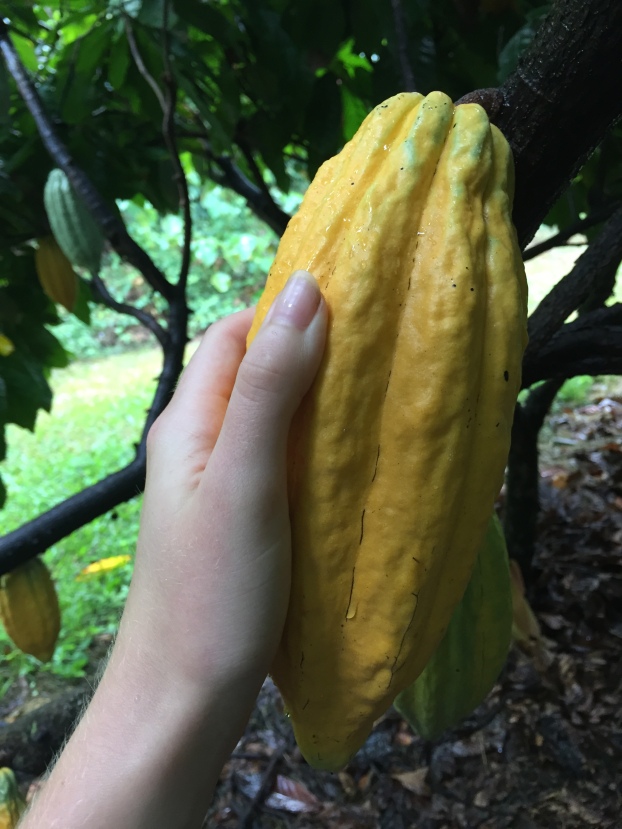
Once this tiny flower is pollinated and the big husks have grown, these cocoa pods are picked and taken off to be processed. Inside the husks are around 16 large cocoa beans, all of which are coated in a milky coloured substance called mucilage. Although the name, texture, and appearance don’t seem very appetising, the contents itself are sweet and taste similar to the popular lychee fruit.
Similar to the primates this tree has coevolved with, Sam, Dee, and I would periodically indulge in the mucilage ourselves when volunteering on the cocoa farm, engaging in the natural activity of seed dispersal. In it’s natural environment, the husks that protect the beans would be discarded near the tree where they can decompose and return nutrients to the soil. However, when this chocolate is harvested, the large pods are picked and then sent off to be processed.
That processing first involves opening the husks and scooping out the 16 or so large cocoa beans. Under some circumstances, the beans are allowed to ferment in the sweet mucilage before being dried, ground, then mixed with sugar and milk. A variety of artistic styles for making chocolate come into play here before the chocolate we know and love is ready for our tummies. But what if this unnatural removal of the pods affects the production of cocoa itself?
Decreases in production made farmers wary of their cocoa crops and this required an investigation into one of the mysteries of cocoa: pollination. Previous research found that cocoa is pollinated by a variety of sand-fly (Diptera; Ceratopogonidae). These tiny flies, which we fondly call ‘midgies,’ are just the right size to pollinate cocoa and thrive in the dark, damp areas provided by the tree. The monocultural development of cocoa has removed a lot of the natural aspects of the tree’s normal environment though and these midgies were no longer as abundant. No midgies means no pollination and without pollination we have no chocolate.
Pollinators for Cocoa!
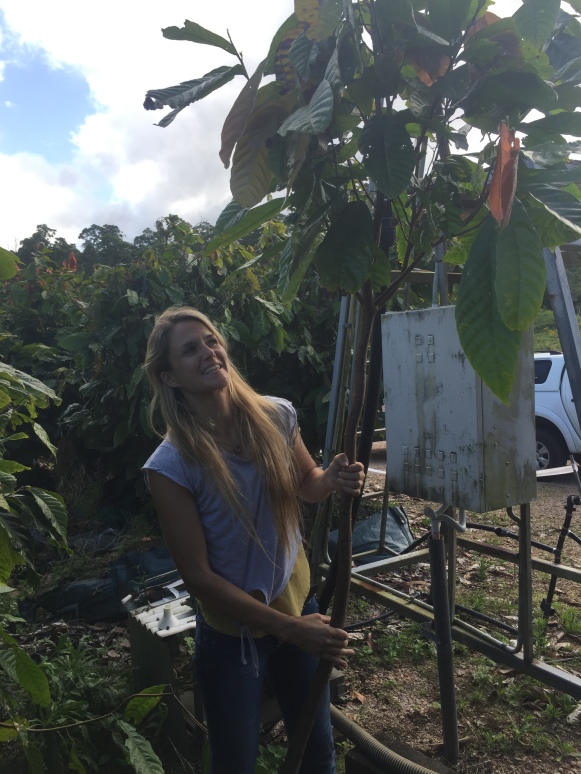
Sam Forbes, a PhD student at JCU, considered the decrease in cocoa production and what may be causing it. After rigorous research into the scientific literature and interviews with local farmers, one solution became obvious: we needed return the husks of the harvested cocoa pods to the farm.
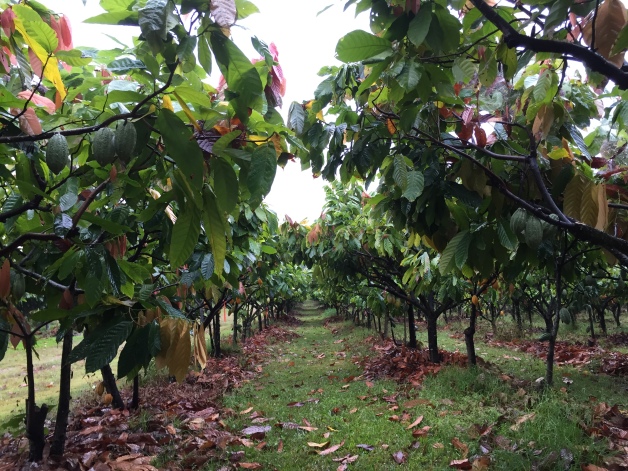
After collaborating with an organic farmer, Sam’s research began on a farm bordering the Daintree Rainforest. The surrounding rainforest could serve as a reservoir for beneficial pollinators like our precious midgie pollinators and the organic maintenance ensured any insects who came onto the crop could survive. So, first Sam returned the harvested cocoa husks to the base of a few different trees then over time she monitored the pollination of the flowers and later the fruit set for harvest. Her findings are still in the process of being published, but the results look quite promising!
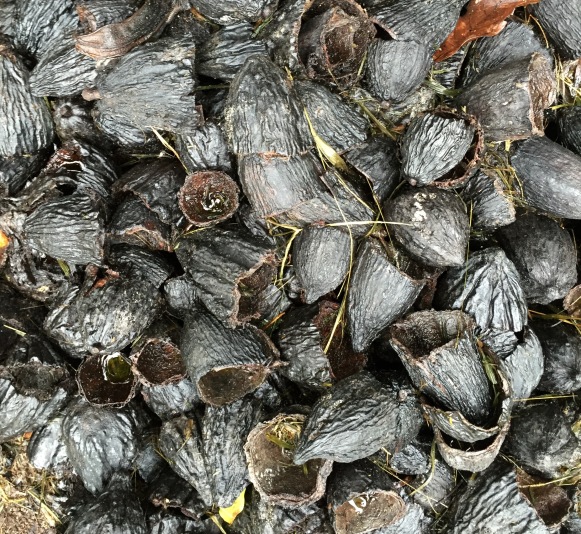
Returning the husks to the farm could not only return nutrients to the soil surrounding the tree, but these decaying fruits can act as a breeding ground for midgies. The tiny sand-fly relatives thrive in the decaying husks and can later fly up to the cocoa flowers to feed on pollen and nectar. Once these proper conditions are met, the cocoa trees’ pollinators can be sustained and now Sam continues to investigate methods of improving cocoa farming.
Despite popular belief, Sam isn’t paid in chocolate nor can she be found lazily indulging in different varieties of cocoa. Sam’s personal work ethic has placed her in many circumstances from raising cocoa trees in her backyard and on JCU’s campus to collecting insect pollinators and researching methods for maintaining such pollinators. She continues to study cocoa at JCU Cairns and is currently contracted by MARS Chocolate, the international candy bar company.
Predators of the Rainforest
Sam isn’t the only primate interested in the insects on an organic cocoa farm though. The addition of husks to the farm has been beneficial to several other varieties of insects and Dee Gowell was interested in documenting the distribution of predators and pests on this crop as well.
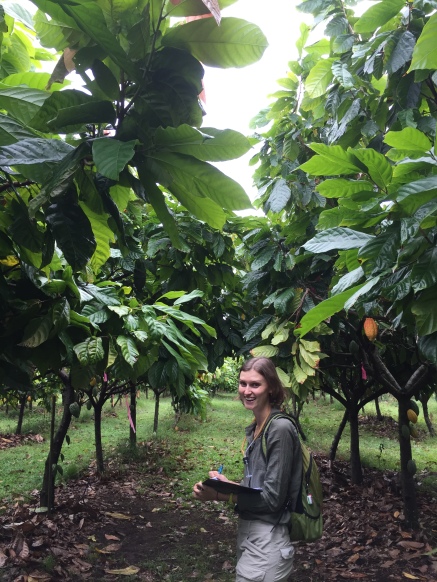
While all farmers know that pollinators are essential to a crop’s health, the other beneficial insects like predators and parasitoids however get overlooked. John Goodman, a local cocoa farmer, noted the aggressive Green Tree Ants (Oecophylla smaragdina) on his farm. These ants famously weave leaves together giving them their other common name, Weaver Ants, which I first learned them by in the United States. They can also act as biological control agents for pests on cocoa like the fruitspotting bug (Hemiptera, Amblypelta spp.). Goodman knowing his crop best, suggested that we investigate these Green Tree Ants and how they might be able to control the pests on the farm. Dee Gowell is currently researching the distribution of these ants and other insects which have benefited from the addition of the husks and the crop’s proximity to the rainforest.
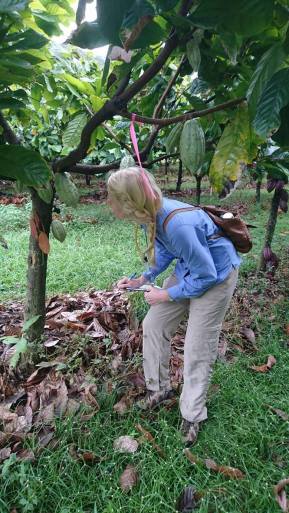
In order to do this sort of research, Dee needed to conduct a large survey of the crop for insects. Happy to hunt for insects in my spare time, I soon found myself driving up the coastline with Dee and Sam each dawn to record the insect diversity on over 300 trees! For this survey we would document the insects we saw on the trees within 3 minutes in order to standardise our sampling. The insects we found continued to amaze Dee and I as we marched along the rows of trees, patiently scanning the branches and leaves.
Some of the most interesting observations were amongst the ants’ behaviour of farming mealy bugs and the diversity of spiders we saw that often outnumbered the insects. Very few of my familiar parasitoid wasps were present on the crop, but several ladybirds, mantids, and lacewing eggs assured us that other predatory insects were present. Some of these insects and spiders can be seen in a few of the photographs below. This is a very small selection from a trove of photographs I collected over our 2 month sampling period.
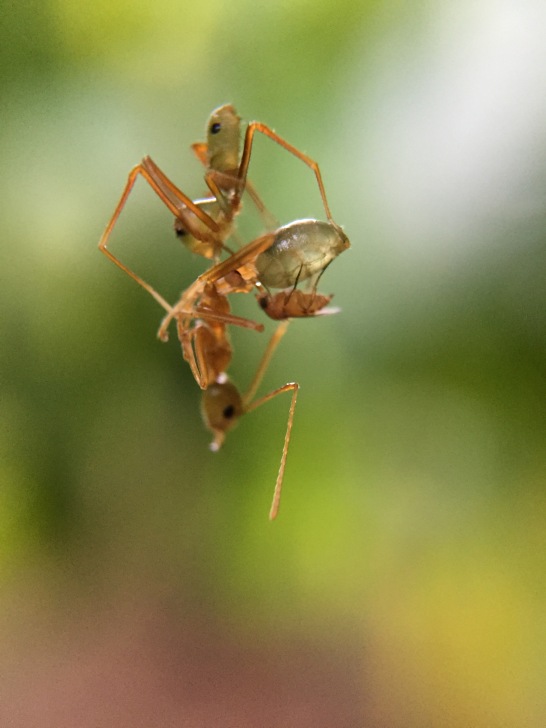

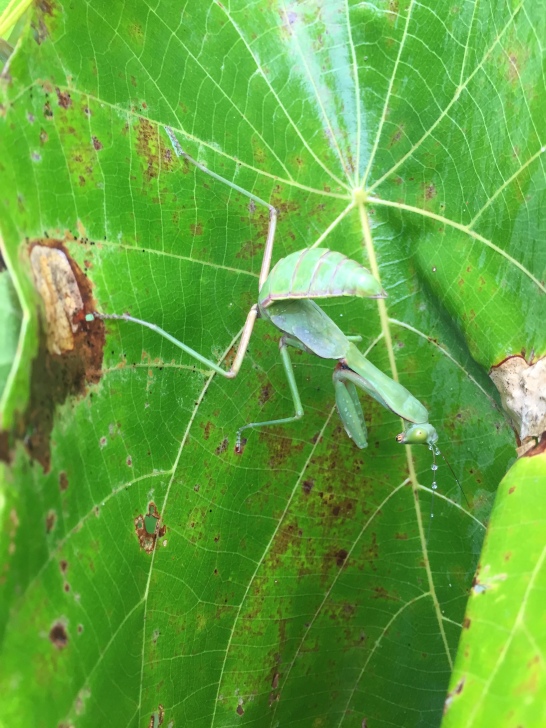
This was one of the best projects I could have been a part of. First, I was allowed to spend hours each day photographing and learning the diversity of insects in Northern Queensland. Second, I had the opportunity to work alongside two other passionate female scientists, each of whom shared wisdom from their experiences in life and have become great friends. Third, I was allowed to learn about an organic farm grown along the rainforest and see firsthand what is possible when you work with nature. John Goodman’s cocoa estate was a lovely area to work on and a wonderful introduction to agriculture. As an entomologist, I hope to use my passion and skillset to the benefit of others. Human landuse is primarily attributed to agriculture, and by improving our methodology for growing different crops, we can hope to reduce the negative impacts of humans on the landscape. This dream became readily apparent and pressing while volunteering on this cocoa farm as we worked beside the World Heritage Reserve Rainforest. The work it will take to understand the dynamic insect realm and what benefits it has for improving agriculture will be enormous, but I am so happy to contribute to this effort.
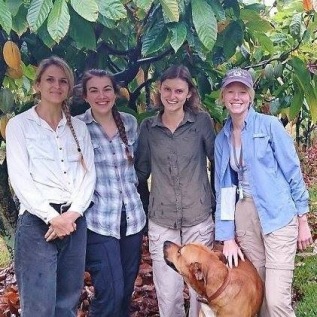
In case you were left wanting more, the supervisor for this project, Tobin Northfield gave a TEDx talk on this whole research project. His talk, “Bite me for chocolate” will give you a quick glance into this project and one reason for why on Earth it could be important to study insects. Check out the talk below!
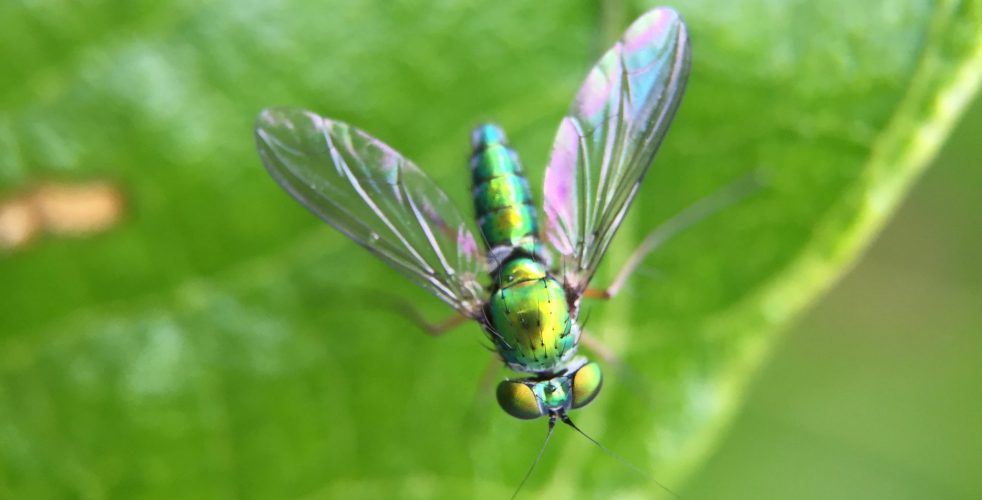







after this you should try to hike to Mount Korbu and Mount Yong Belar with a height of 2183 meters above sea level in the State of Perak… my name is Aele & my IG is “Aelerusli”.. live in Kuala Lumpur…
LikeLike
Thanks for the advice! I’ll be heading to Borneo on Sunday to go through a few national parks there. If I get a chance I will try to check out your recommendations!
LikeLike